Birth
Slide 1 of 15: Synopsis

Author
Catherine Robertson, Grossmont College
S. Stavros Valenti, Hofstra University
Synopsis
This activity focuses on the biology of birth and the experience that most mothers go through in having a baby. You will see video clips and illustrations depicting the various stages leading up to a healthy, vaginal birth. You will also explore some medical interventions in the birth process as well as the growing trend to personalize the birthing experience for both mother and child.
References
Centers for Disease Control and Prevention. (2000). Trends in the attendant, place, and timing of births and in the use of obstetric interventions in the United States, 1989–1997. Mortality and Morbidity Weekly Report, 49.
Centers for Disease Control and Prevention. (1999). Achievements in public health, 1900–1999: Healthier mothers and babies. Mortality and Morbidity Weekly Report, 48.
Troyer, L., & Parisi, V. (1994). Management of labor. In J. Scott, P. Di Saia, C. Hammond, & W. Spellacy. (Eds.), Danforth obstetrics and gynecology. Philadelphia: Lippincott.
Slide 2 of 15: It's Time!
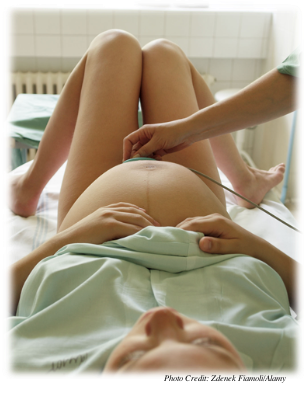
With so little space to move about, the baby shifts position in the weeks leading up to labor. Usually, the baby ends up with its head lodged in the birth canal approximately 266 days after conception. At this time, labor is triggered as an outpouring of hormones from the baby’s brain passes through the baby’s bloodstream and into the mother’s. As the mother’s uterus and surrounding uterine muscles begin contractions, birth draws near. Labor averages about 18 hours for a first baby and six hours for subsequent babies.
In this activity, you will watch mothers and fathers go through the process of childbirth.
Slide 3 of 15: Overview of a Healthy Birth

One of the first signs of labor is a leakage of fluid that occurs when the amniotic sac tears during early contractions. The mother may also notice a pinkish residue, referred to as the “bloody show,” that occurs when the mucous plug of the cervix loosens. Regular, strong muscle contractions will increase in intensity and occur at shorter intervals signaling that labor is progressing. At this point, it is time to go to the hospital or birthing center where mother and baby can be monitored.
Through childbirth classes, Vanessa has prepared for the three stages of the birth process.
- Stage 1: The first stage of labor begins with contractions of the uterus and dilation of the opening of the cervix to 10 centimeters (about four inches).
- Stage 2: The second stage of labor begins when the baby’s head moves through the cervix and into the birth canal. This stage ends with the delivery of the baby.
- Stage 3: The third stage of labor is when the mother’s body expels the placenta and the remainder of the umbilical cord, which was cut when the baby was delivered.
In the next few screens, you will follow Vanessa on her journey through the stages of the birth process.
Slide 4 of 15: Stage 1: Contractions Begin
- Chapters
- descriptions off, selected
- captions settings, opens captions settings dialog
- captions off, selected
- English Captions
- English Captions
This is a modal window.
Beginning of dialog window. Escape will cancel and close the window.
End of dialog window.
This is a modal window. This modal can be closed by pressing the Escape key or activating the close button.
This is a modal window.
Vanessa started having contractions after midnight. A full 24 hours later, she was still in Stage 1. Here, she talks about the process of labor, receives an epidural injection to help her with the pain, and endures contractions.
A new mother may not recognize the very first contractions. Many women report that early contractions feel like the beginning of a painful bowel movement, impending nausea, or menstrual cramping. She probably will not be aware of the baby’s specific movements as it has been moving around fairly steadily for the past week or two getting into position for delivery.
Early contractions usually last anywhere from 15 to 60 seconds, and they are spaced about 15 to 20 minutes apart. As labor progresses, contractions grow more intense, last longer, and occur more frequently. By the end of the first stage of labor, the contractions are only two to five minutes apart.
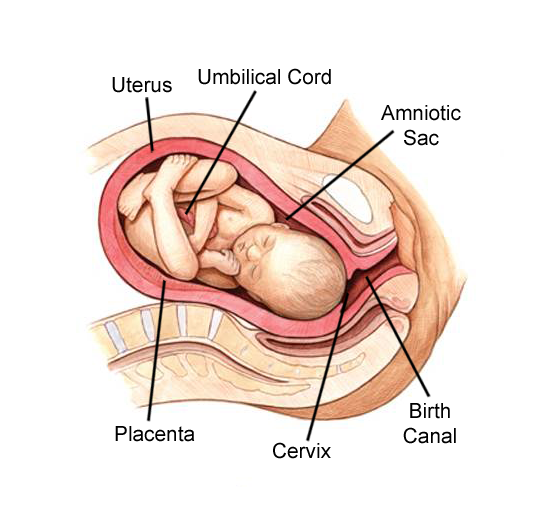
Slide 5 of 15: Transition from Stage 1 to Stage 2
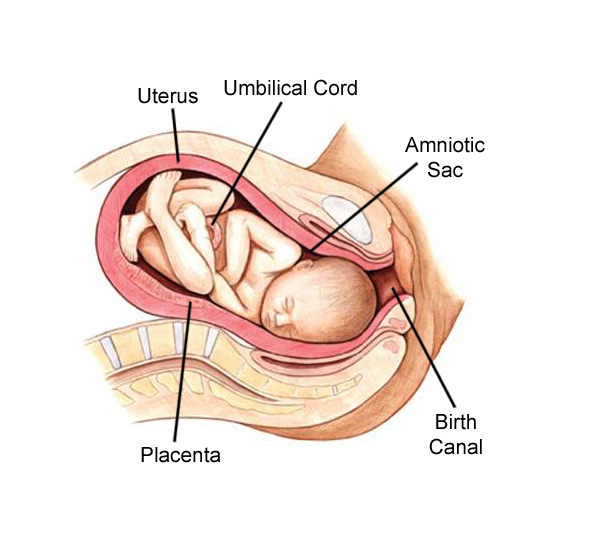
The first stage of labor may last 12 to 24 hours. It ends when the cervix has dilated to at least four centimeters. There is a transition between the first and second stage of the birth process. Transition is a time of very intense labor. Contractions are extremely strong and frequent. Hormonal changes in the mother’s body may cause nausea, shivering, shaking in the outer limbs, fatigue, and/or hot flashes or cold flushes. Stress levels may rise, which in turn, may cause her to become very irritable. The cervix continues to dilate to close to its full 10 centimeters as the body prepares to move the baby through the birth canal. Fortunately, this painful phase is short-lived and ends with the baby beginning its journey to meet the outside world.
Slide 6 of 15: Stage 2: Crowning and Delivery of the Baby
- Chapters
- descriptions off, selected
- captions settings, opens captions settings dialog
- captions off, selected
- English Captions
This is a modal window.
Beginning of dialog window. Escape will cancel and close the window.
End of dialog window.
This is a modal window. This modal can be closed by pressing the Escape key or activating the close button.
This is a modal window.
After hours in labor, Vanessa and her husband are finally able to see their new arrival.
Stage 2 of labor begins when the baby’s head moves through the cervix and into the birth canal. Contractions are now fairly constant in that they occur about one minute apart and last about one minute. This stage, which averages about 90 minutes, is a critical time when the mother must bear down and help to push the baby outside of her body. If all goes well, the baby’s head will emerge first as it does for 95% of newborns. Just before the actual birth, observers will be able to see the head crowning, or showing at the opening of the vagina.
After three hard final pushes, Vanessa’s little girl has arrived. Her name is Jaclyn, and she weighs 7 pounds, 8 ounces. As soon as she comes out, little Jaclyn is placed on her mother’s belly. With instructions from the physician, the father cuts the umbilical cord. The nurse then puts Jaclyn in the warming tray, wipes her off, and clamps her umbilical cord. After a few minutes in the warming unit, Jaclyn is weighed. When she is sufficiently warm, Jaclyn is given back to her mother. At this point, Jaclyn is welcomed by family and friends.
Slide 7 of 15: 1.1 Stage 2: Crowning and Delivery of the Baby (continued)
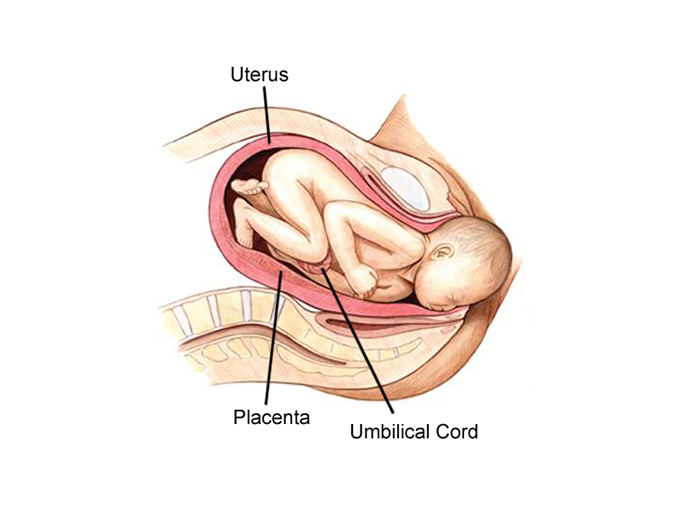
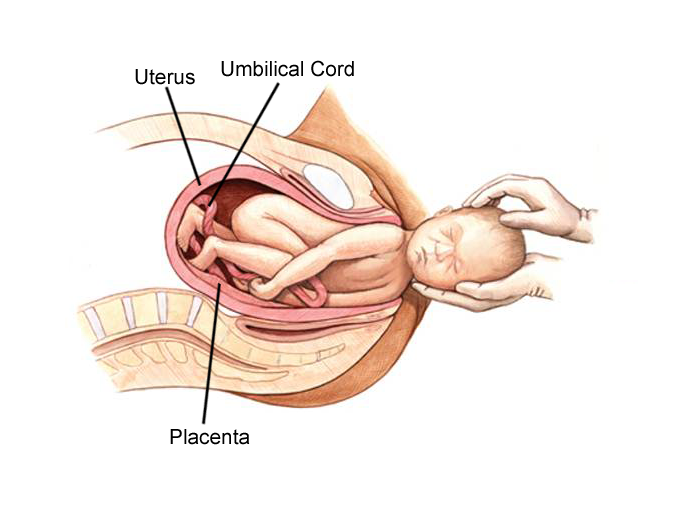
Slide 8 of 15: Stage 3: Expelling the Afterbirth
- Chapters
- descriptions off, selected
- captions settings, opens captions settings dialog
- captions off, selected
- English Captions
This is a modal window.
Beginning of dialog window. Escape will cancel and close the window.
End of dialog window.
This is a modal window. This modal can be closed by pressing the Escape key or activating the close button.
This is a modal window.
The fetus needs support structures, such as the amniotic sac, the placenta, and the umbilical cord, for nourishment and protection while in the mother’s uterus. Once the baby is born, these structures are no longer necessary, and they are expelled from the mother’s body as afterbirth during Stage 3.
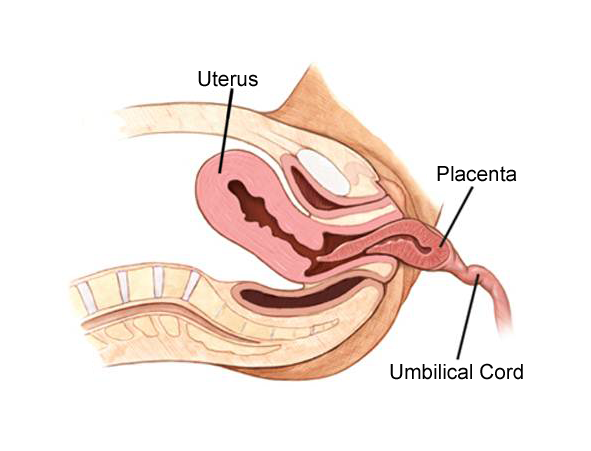
Slide 9 of 15: Medical Intervention: When Nature Needs a Helping Hand
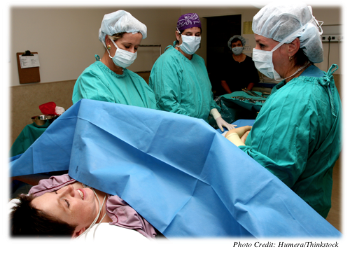
Sometimes, a mother needs medical intervention to help her to deliver her baby. There are several common procedures that can assist the process of childbirth.
- The most common intervention is medication to ease labor pains. Physicians give minimal doses because these medications may also affect the fetus.
- A doctor may decide that labor should be induced for the safety of the mother or the child. Labor can be induced either by rupturing the amniotic membranes or by injecting the mother with oxytocin, a hormone that will initiate contractions.
- To avoid tears in the mother’s vaginal wall during delivery of a large baby, the physician may perform an episiotomy, a minor incision that widens the vaginal opening and lets the baby’s head and body emerge more easily.
- When complications arise during the course of a vaginal delivery, medical personnel may recommend a cesarean section (c-section), a surgical procedure in which the infant is removed through an incision in the wall of the mother’s uterus. Many babies and mothers whose lives would have been at risk during a vaginal delivery have been saved by this procedure.
Slide 10 of 15: Personalizing Childbirth
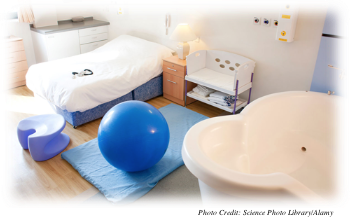
A century ago, most women gave birth at home. In the U.S. today, the vast majority of births take place in a hospital. With this attention to the medical needs of and potential risks to mother and baby, the mortality rate associated with childbirth has dropped significantly in the past century. While no one wants those mortality rates to rise again, some critics question whether medical intervention during childbirth occurs too readily. Analysts within the medical field have argued that medical procedures, such as cesarean sections, induced labor, and episiotomies, may be performed too frequently. Possibly inspired by criticism of the traditional hospital birthing model as being sterile and impersonal and/or by the increasing availability of more home-like birthing alternatives, a growing trend to personalize childbirth has evolved over the last 30 years.
The use of midwives to help in the labor and delivery of low-risk pregnancies has increased during these three decades. Birth support programs have become readily available to help to prepare parents for the challenges of pregnancy, labor, and delivery. These programs provide training in everything from nutrition and healthy practices for a pregnant woman to breathing and relaxation techniques to help the mother deal with the pain of labor to responsibilities and assignments for the birth coach, a vital member of the birth team. More than 50 percent of the hospital rooms used for childbirth have been converted into home-like labor rooms, where family members can gather to await the birth of the baby. The growing number of options for families reflects the overwhelming movement toward designing, customizing, and personalizing the birthing process.
Slide 11 of 15: Assessment: Check Your Understanding

Slide 12 of 15: Assessment: Check Your Understanding

Slide 13 of 15: Assessment: Check Your Understanding

Slide 14 of 15: Assessment: Check Your Understanding

Slide 15 of 15: Assessment: Check Your Understanding

Congratulations! You have completed this activity.Total Score: x out of x points (x%) You have received a provisional score for your essay answers, which have been submitted to your instructor.